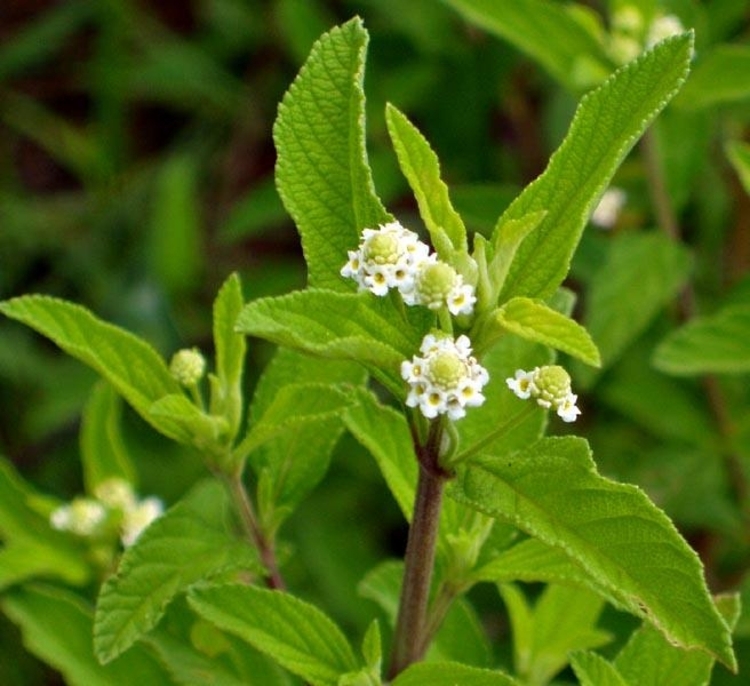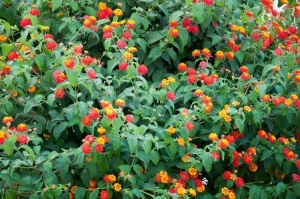
The Sunday Mail

Andrew Mangwarara
THE proliferation of exotic plants brought with it many “invasive alien plants”, the likes of lantana camara.

Lantana
It has reached where many people mistake our own local herbs like lippia javanica (zumbani) with lantana camara.
Some would argue with you till dusk saying they grew up drinking this lantana as a tea. Let us set the record straight here, lantana camara is the exotic plant whilst lippia javanica is the indigenous herbal plant.
There is a marked difference between the two.
Lantana camara is of the verbernaceae family originally from South America, which has become a serious invasive plant in many countries.
It is a shrub which can grow up to four metres in height but can use the support of trees to climb reaching more than 10m.
The leaves are egg shaped and rough to the feel, whilst the flowers consist of a cluster four-millimetre wide usually comprising three colours. A wide variety of colours ranging from yellow, orange, red, pink, purple to white exist. The leaves render the soil unusable by other plants as they contain harmful toxins.
Lantana’s fruit is green at first turning to a bluish black when ripe, three millimetres in diameter, particularly toxic when green. Its stems are green and square shaped when young, becoming round and turning grey or brown when mature.
This plant’s leaves are also poisonous to livestock, causing skin discolouration. Its seed is consumed by birds enabling it to spread very fast through their droppings.
Around Zimbabwe one cannot help but notice the spread of lantana as it quickly renders productive land unusable as it creates impenetrable thickets. Our national biodiversity is greatly challenged by this weed as it out-competes local native plant species.
The tick berry’s fruits are toxic when green. Its leaves are apparently used for medicinal purposes for swellings and pain of the body by boiling them before applying to the affected area.
The flowers of lantana worked a charm on many gardeners (and they still do) making it a popular plant before the realisation set in that it was actually a notorious weed. However, some low growing species of lantana like lantana montevidensis are not invasive.
Let us look at lippia javanica (fever tea) zumbani in Shona, umsuzwane in isiNdebele. It also belongs to the same family, verbenaceae, but they are different. This is an indigenous plant widely distributed in all the areas of Zimbabwe and in most countries of Southern Africa.
Lippia javanica is a small, hardy, multi-stemmed shrub reaching a height of about one metre to two metres with medicinal properties widely sought after in the savanna landscape, to treat coughs and aching muscles. It flowers throughout the year producing small creamy white flowers in clusters.
It is a perfect tea plant and is available year round.
When crushed the leaves give off a lemon scent, which has allowed it to be used as an insect repellent, bringing down fevers, malaria, treat scalp infections, disinfect meat and as a charm to protect one from crocodiles and dogs.
The fever plant or lemon bush can be propagated from seed or from cuttings. It is an easy plant to grow since it can withstand drought conditions. This plant is widely abundant in the wild that some have mistaken it for lantana, however, it is not as robust as lantana and it does not have thorns. Its lemon scent appears to protect it from grazing animals.
In the garden, lippia javanica can prove to be a useful plant indeed growing in full sun or part shade tolerating different soils.
Collect the small brown seeds when ripe as they dry on the plant. Sow the seeds in trays or in prepared beds and they readily germinate. One can also take five to eight centimetre tip cuttings. Semi-hard wood cuttings taken in spring root fast and can be aided for quick rooting by using a rooting hormone like seradix.
Plant rooted cuttings in a small pot or sleeve in a potting mix with equal parts of compost, soil and river sand. The leaves can be harvested for commercial use in summer or just before winter.
Indeed of the two plants lantana and zumbani it is clear that zumbani is the most useful and beneficial unlike lantana, which is a serious noxious weed, which we should do much to destroy. But as it stands it looks like we are losing the battle with lantana at an alarming rate.
The onus is on us to come up with a viable action plan.
Feedback: [email protected]



